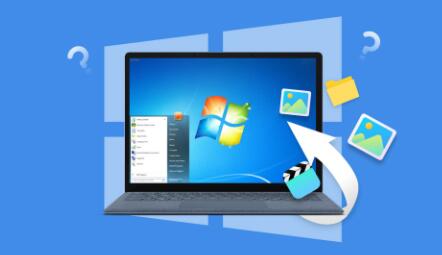This comprehensive guide will walk you through various methods to find and recover those files, ensuring you have the tools and knowledge necessary to mitigate data loss.
1. Deleted Files in Windows
When you delete a file in Windows, it doesn’t immediately vanish from your hard drive. Instead, it is moved to the Recycle Bin, where it can be easily restored. If you delete a file from the Recycle Bin or use Shift + Delete, the file becomes harder to recover but is still retrievable using specialized software until the space it occupied is overwritten.
2. Checking the Recycle Bin
The Recycle Bin is the first place to check for recently deleted files:
Accessing the Recycle Bin: You can find the Recycle Bin icon on your desktop. Double-click to open it.
Finding Your Files: Look for the files you’ve recently deleted. They are typically sorted by deletion date.
Restoring Files: Right-click on the file you want to restore and select “Restore.” This will return the file to its original location.
Tip: If you can’t find your file, it may have been permanently deleted or moved to a different location.

3. Using File History
Windows File History is a backup feature that automatically saves copies of your files. Here’s how to use it:
Setting Up File History: Go to Settings > Update & Security > Backup. Connect an external drive and select “Add a drive” to set up File History.
Restoring Files: If you have File History set up:
Go to Control Panel > File History.
Click “Restore personal files.”
Browse through the backed-up versions of your files and select the one you wish to restore.
4. Restoring Previous Versions
Windows also keeps previous versions of files and folders, allowing you to restore them:
Accessing Previous Versions:
Navigate to the folder where the deleted file was located.
Right-click the folder and select “Properties.”
Go to the “Previous Versions” tab to view available backups.
Restoring Files: Select the desired version and click “Restore” to recover your deleted files.
5. Utilizing Windows Search
If you can’t remember the exact location of your deleted file, use Windows Search:
Using the Search Bar: Click the search icon on the taskbar and type the file name or a keyword related to the file.
Search Filters: Use filters to narrow down your search by date or file type. Click “Search Tools” in the search ribbon to access these options.
6. Using Command Prompt
For more advanced users, the Command Prompt can help in locating deleted files:
Open Command Prompt: Type “cmd” in the search bar, right-click, and select “Run as administrator.”
Using the Attrib Command: You can try using the attrib command to search for hidden files. For example, type:
bash
attrib -h -r -s /s /d C:\*.*
This command will display files that may have been marked as hidden or protected.
7. Third-Party Data Recovery Software
If the above methods fail, third-party recovery software can help recover deleted files:
Popular Recovery Tools:
Panda Assistant is a cutting-edge data recovery software designed to help users effortlessly retrieve lost or deleted files from various storage devices, including hard drives, USB drives, and memory cards. Whether you’ve accidentally deleted important documents, lost photos due to a system crash, or experienced data loss from formatting, Panda Assistant offers an intuitive interface and powerful recovery capabilities to meet your needs.
With advanced scanning algorithms, Panda Assistant can locate and restore a wide range of file types, from documents and photos to videos and music. The user-friendly design ensures that even those with minimal technical knowledge can navigate the recovery process with ease. Simply download the software, select the device you wish to scan, and let Panda Assistant do the rest.
Data recovery can be a daunting task, but Panda Assistant simplifies it. Our commitment to data integrity ensures that recovered files retain their original quality and structure, giving users peace of mind. Additionally, our customer support team is readily available to assist with any questions or concerns throughout the recovery process.
8. Preventive Measures
To minimize the risk of losing files in the future, consider the following preventive measures:
Regular Backups: Set up a backup routine using Windows Backup or third-party tools.
Cloud Storage: Use cloud services like OneDrive, Google Drive, or Dropbox to store important files.
Be Cautious: Always double-check before deleting files, especially when using Shift + Delete.
Finding recently deleted files on Windows doesn’t have to be a daunting task. By understanding the various methods available from checking the Recycle Bin to utilizing third-party recovery software you can significantly increase your chances of recovering lost data. Implementing preventive measures can further safeguard your files against future loss. With this guide, you’re equipped to tackle file recovery effectively, ensuring that your important documents and memories are preserved.
About us and this blog
Panda Assistant is built on the latest data recovery algorithms, ensuring that no file is too damaged, too lost, or too corrupted to be recovered.
Request a free quote
We believe that data recovery shouldn’t be a daunting task. That’s why we’ve designed Panda Assistant to be as easy to use as it is powerful. With a few clicks, you can initiate a scan, preview recoverable files, and restore your data all within a matter of minutes.
Subscribe to our newsletter!
More from our blog
See all postsRecent Posts
- How to recover a deleted slide in powerpoint? 2025-02-27
- How to recover deleted capcut videos? 2025-02-27
- How to recover a file deleted from a shared drive? 2025-02-27










